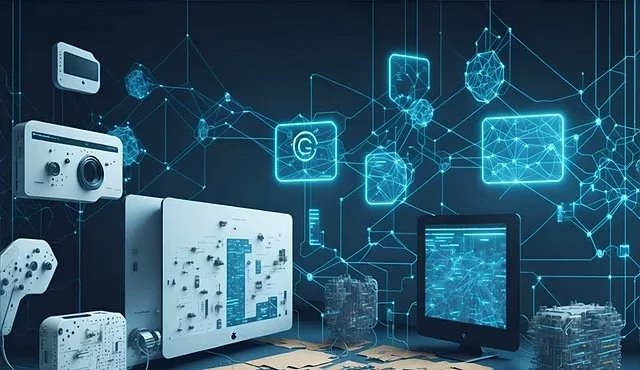Imagine a world where everyday objects are imbued with intelligence, seamlessly communicating and coordinating with each other to make our lives more efficient, convenient, and interconnected. This is the essence of the Internet of Things (IoT), a revolutionary concept that is transforming the way we interact with the world around us.
At its core, the Internet of Things is a network of physical devices, vehicles, home appliances, and other items embedded with sensors, software, and network connectivity. These “smart” objects are able to collect and exchange data, allowing them to be monitored, controlled, and automated remotely. It’s a paradigm shift that blurs the lines between the digital and physical realms, creating a seamless fusion of the two.
The Origins of IoT
While the concept of interconnected devices may seem futuristic, the roots of IoT can be traced back to the late 20th century. In the 1980s, the first machine-to-machine (M2M) communication systems emerged, laying the groundwork for what would eventually become the IoT. However, it wasn’t until the late 1990s that the term “Internet of Things” was coined by Kevin Ashton, a British technology pioneer.
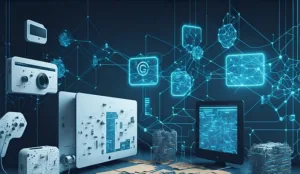
Ashton’s vision was to leverage the power of the internet and radio-frequency identification (RFID) technology to track and monitor physical objects in the supply chain. This idea quickly gained traction, and as the internet became more ubiquitous and wireless technologies advanced, the possibilities for IoT applications grew exponentially.
The Age of Interconnectivity
Today, the Internet of Things is everywhere, permeating nearly every aspect of our lives. From smart homes and cities to healthcare, transportation, and industry, the applications of IoT are vast and far-reaching.
In our homes, IoT devices like smart thermostats, security systems, and voice assistants make our living spaces more comfortable, secure, and efficient. Smart appliances can be controlled remotely, reducing energy consumption and minimizing waste.
In the realm of healthcare, IoT-enabled wearables and implantable devices monitor patients’ vital signs, enabling real-time diagnostics and personalized treatment plans. Telemedicine and remote patient monitoring are becoming increasingly common, improving access to healthcare and reducing costs.
Cities are also embracing the power of IoT, with smart traffic management systems, intelligent lighting, and environmental monitoring sensors helping to create more sustainable and livable urban environments.
The Impact of IoT on Industries
The impact of the Internet of Things extends far beyond consumer applications. Industries such as manufacturing, agriculture, and logistics are experiencing transformative changes driven by IoT technologies.
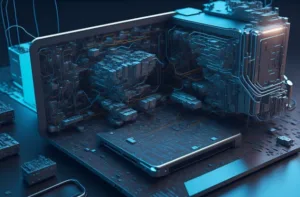
In manufacturing, IoT sensors and devices enable predictive maintenance, minimizing downtime and maximizing efficiency. Automated systems can monitor machinery, detect potential issues, and schedule maintenance before breakdowns occur, reducing costly repairs and production delays.
In agriculture, IoT solutions like precision farming systems and smart irrigation techniques are helping to optimize crop yields, conserve water, and reduce the use of pesticides and fertilizers. Farmers can monitor soil conditions, weather patterns, and crop health in real-time, enabling data-driven decision-making and sustainable practices.
Logistics and supply chain management are also benefiting from IoT technologies. RFID tags, GPS tracking, and interconnected sensor networks provide real-time visibility into the movement of goods, enabling optimized routing, inventory management, and predictive analytics.
Challenges of The Internet of Things Adoption
While the potential benefits of the Internet of Things are vast, the adoption of these technologies is not without challenges. Security and privacy concerns are among the most pressing issues, as IoT devices can potentially be vulnerable to cyber-attacks, data breaches, and unauthorized access.
Ensuring the security of IoT systems and protecting user data is a critical priority for manufacturers, service providers, and regulatory bodies. Robust encryption, authentication protocols, and regular software updates are essential to mitigating risks and maintaining consumer trust.
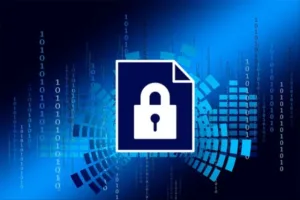
Interoperability and standardization are also significant challenges in the IoT ecosystem. With a multitude of devices, platforms, and protocols, ensuring seamless integration and communication between different systems can be complex. Industry-wide standards and open architectures are necessary to facilitate seamless connectivity and data exchange.
The Future of IoT: A Connected World
As we move further into the digital age, the Internet of Things is poised to become an integral part of our daily lives. The potential applications are virtually limitless, and the impact on industries, economies, and societies could be profound.
Imagine smart cities with autonomous vehicles, intelligent traffic management systems, and energy-efficient buildings. Envision precision agriculture techniques that optimize crop yields while minimizing environmental impact. Conceptualize advanced manufacturing facilities where every component is interconnected, enabling real-time monitoring, predictive maintenance, and automated processes.
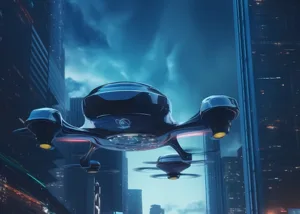
The future of IoT is not just about convenience or efficiency; it’s about creating a more sustainable, interconnected, and intelligent world. As devices become increasingly sophisticated and data analytics capabilities advance, the possibilities for innovation and optimization are boundless.
However, as we embrace the Internet of Things, it is crucial to address the challenges of security, privacy, and interoperability. By fostering collaboration between industry stakeholders, policymakers, and consumer advocates, we can develop robust standards, regulations, and best practices to ensure the responsible and ethical development of IoT technologies.
In the end, the Internet of Things is more than just a technological revolution; it’s a profound shift in how we perceive and interact with the world around us. By harnessing the power of interconnectivity, we can unlock new realms of possibility, creating a future where the physical and digital worlds are seamlessly intertwined, and where the boundaries of what’s possible are constantly being pushed.
READ ALSO
Cybersecurity: Our Digital Frontier
Quantum Computing: Mysteries of Subatomic World
Virtual Reality: Transcending Boundaries of Reality
Frequently asked questions
1. What is the Internet of Things (IoT)?
The Internet of Things refers to the network of physical objects or “things” embedded with sensors, software, and network connectivity that allows them to collect and exchange data. These devices can be monitored, controlled, and automated remotely, enabling seamless communication between the digital and physical worlds.
2. What are some common examples of IoT devices?
Some common examples of IoT devices include smart home appliances (thermostats, security systems, and voice assistants), wearable fitness trackers, smart city infrastructure (traffic management systems and intelligent lighting), and industrial equipment with embedded sensors for monitoring and predictive maintenance.
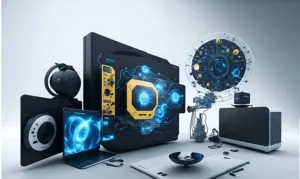
3. What are the advantages of the Internet of Things?
The advantages of IoT include increased efficiency, convenience, and automation in various domains, such as homes, cities, healthcare, manufacturing, and agriculture. IoT solutions can optimize resource utilization, reduce waste, improve decision-making through data analytics, and enable new services and business models.
4. What are the main challenges associated with the Internet of Things?
The primary challenges of IoT adoption include security and privacy concerns, as IoT devices can be vulnerable to cyber-attacks and data breaches. Interoperability and standardization across different devices, platforms, and protocols are also significant challenges, as well as the need for robust infrastructure and connectivity.
5. How is the Internet of Things shaping the future?
The Internet of Things is expected to have a profound impact on various industries and aspects of daily life. It is paving the way for smart cities with autonomous vehicles, intelligent traffic management, and energy-efficient buildings. In healthcare, IoT-enabled devices and telemedicine solutions are improving access and personalized treatment. Additionally, IoT is driving advancements in precision agriculture, advanced manufacturing, and supply chain management.
References
1. Ashton, K. (2009). That ‘Internet of Things’ Thing. RFID Journal, 22(7), 97-114.
2. Gubbi, J., Buyya, R., Marusic, S., & Palaniswami, M. (2013). Internet of Things (IoT): A vision, architectural elements, and future directions. Future Generation Computer Systems, 29(7), 1645-1660.
3. Manyika, J., Chui, M., Bisson, P., Woetzel, J., Dobbs, R., Bughin, J., & Aharon, D. (2015). The Internet of Things: Mapping the value beyond the hype. McKinsey Global Institute.
4. Minerva, R., Biru, A., & Rotondi, D. (2015). Towards a definition of the Internet of Things (IoT). IEEE Internet Initiative, 1, 1-86.
5. Nordrum, A. (2016). Popular Internet of Things Forecast of 50 Billion Devices by 2020 Is Outdated. IEEE Spectrum.

